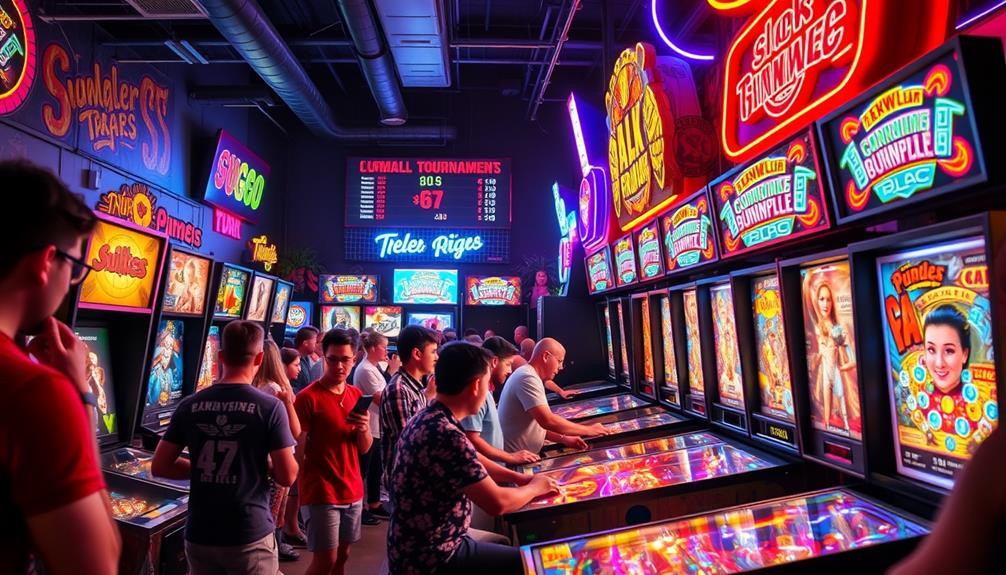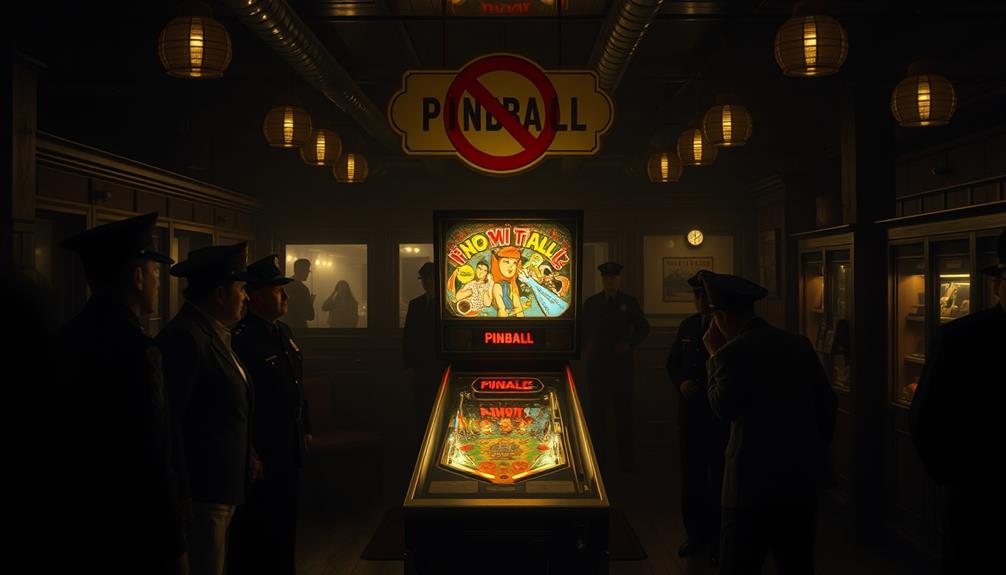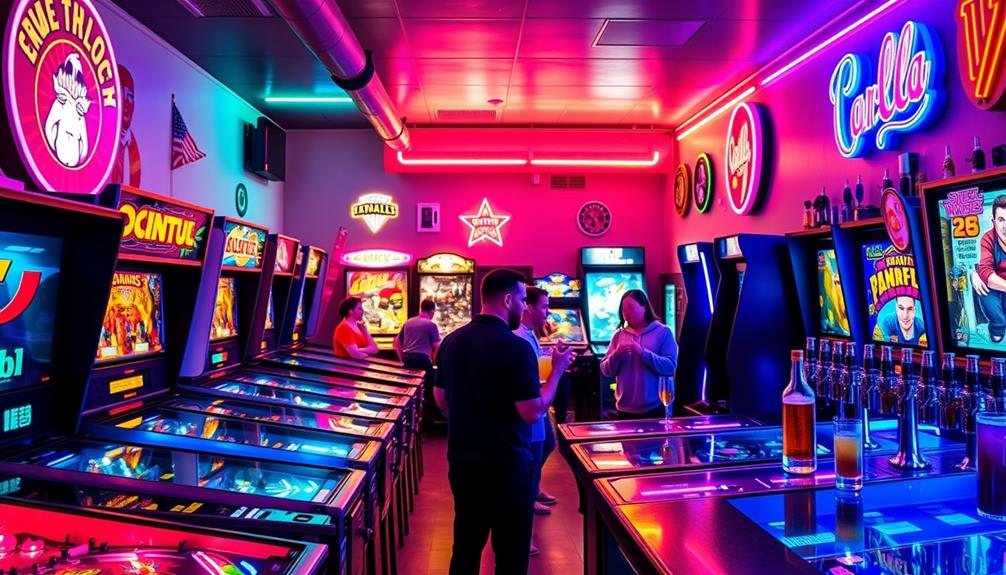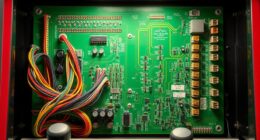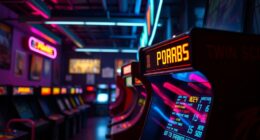Building a pinball machine can cost anywhere from $2,500 to $15,000 or more, depending on the design choices and features you select. If you choose to go the DIY route, expect expenses to begin at around $5,000, while premium models such as those from Jersey Jack can reach up to $15,000. Utilizing donor machines for parts can help reduce expenses. Personalizing with unique designs and customization may impact the final price. Be sure to account for unexpected costs, which could add an extra 15% to your total budget. There are numerous factors to consider when planning your project! Factors such as shipping, taxes, and necessary assembly tools and materials will also contribute to the overall cost. Conversely, if you are looking for a more budget-friendly option, you might want to explore virtual pinball machines, which tend to be significantly less expensive than physical machines. Virtual pinball machines can start at just a few hundred dollars, making them a more economical choice for pinball enthusiasts. Virtual pinball machine cost can start as low as a few hundred dollars, making it a more affordable alternative for pinball enthusiasts.
Key Takeaways
- The cost to build a DIY pinball machine typically starts around $2,500 and can exceed $5,000 based on customization and components used.
- Initial parts cost can range from $1,500 to $8,000, influenced by complexity and whether donor machines are utilized.
- Mechanical parts, LEDs, and driver boards generally cost between $2,000 and $3,000 for new components.
- Using donor machines can reduce costs significantly, allowing for unique designs while saving on parts.
- Budgeting for unexpected costs is crucial, typically adding around 15% of the total budget for miscellaneous expenses.
Cost Breakdown of Components
When you begin on building a custom pinball machine, understanding the cost breakdown of components is essential. The initial parts cost can start around $1,500 but might escalate to $8,000 based on complexity and the sourcing of components.
Mechanical parts, LEDs, and driver boards typically range from $2,000 to $3,000, greatly impacting your overall budget. Incorporating multi-functional gear can also contribute to cost efficiency, as it allows for a reduction in the number of individual components needed while maintaining functionality.
One effective way to save is by utilizing donor machines. These existing pinball machines can provide valuable parts and often come in priced between $1,000 to $2,000, including repairs.
This approach not only cuts costs but can also enhance the uniqueness of your custom build.
Labor and Skill Requirements

When you start building a custom pinball machine, you'll need a team with diverse skills.
The complexity of this project often requires individuals with expertise in various fields, such as mechanical engineering and software development.
You'll require designers for blueprints, engineers for the mechanical aspects, and programmers to create unique rulesets.
This collaboration is essential to bring your vision to life and guarantee a successful project.
Additionally, drawing inspiration from astrology and attractiveness may even influence the design elements, enhancing the overall appeal of your machine.
Required Design Expertise
Building a pinball machine requires a diverse set of design expertise, incorporating various specialized skills. First, you'll need a skilled designer to create blueprints that guarantee the layout and mechanics function correctly. This foundational design expertise is essential for a successful build.
To foster an innovative environment, consider incorporating elements of design thinking into your project, as it emphasizes user-centric solutions and collaboration. If you want to add custom features, collaboration with engineers and fabricators is necessary, as they'll translate your design ideas into practical components and systems.
Graphic design expertise plays a significant role, too. The visual appeal of your custom machine can greatly influence its attraction and branding, so hiring a talented graphic designer is imperative.
During the beta testing phase, input from all hired professionals is critical. Their collective feedback allows for adjustments based on performance and user experience, enhancing the final product's quality.
Ultimately, your pinball machine's success hinges on the synergy of various design skills, from aesthetics to practical mechanics. By understanding and sourcing the right design expertise, you'll be well on your way to creating an engaging and functional pinball machine that stands out in the market.
Programming and Engineering Skills
Creating a custom pinball machine demands a blend of programming and engineering skills that are fundamental for its functionality and gameplay experience.
You'll need skilled designers to produce blueprints and engineers who can develop unique mechanical features and electronic systems. These engineering aspects are essential for guaranteeing that everything works harmoniously.
Additionally, having a methodical approach to design and testing can greatly improve the quality of the final product, as highlighted in best practices in software quality assurance.
Programming skills are just as important. They allow you to create the machine's ruleset, dictating gameplay mechanics and player interactions. Without a solid programming foundation, your pinball machine won't offer the engaging experience players expect.
Additionally, expertise in graphic design is necessary to enhance the aesthetic appeal of the playfield and cabinet, making your machine visually enthralling.
During the beta testing phase, collaboration among all hired professionals is essential. This teamwork enables everyone to make adjustments based on gameplay feedback, ultimately enhancing the final product's quality.
Keep in mind that the need for specialized skills in engineering, programming, and design can greatly influence the labor costs associated with building a custom pinball machine. Investing in the right talent will guarantee you create a standout game that players will love.
Prototyping and Component Sourcing

When you're developing a prototype for your pinball machine, it's crucial to plan your budget carefully, typically ranging from $2,000 to $3,000 for parts.
Understanding the importance of a budget can help you allocate funds effectively. Sourcing components efficiently from established suppliers can save you money and time, while using classic cabinet dimensions helps streamline construction.
Collaborating with experienced builders can also boost the quality of your design, ensuring it meets your expectations.
Prototype Development Process
Maneuvering the prototype development process is essential for ensuring your pinball machine meets market demands and performs well. Creating a prototype allows you to assess market viability and typically requires collaboration with experienced builders to enhance quality and functionality.
Incorporating unique design elements inspired by cultural heritage, such as those found in the architectural styles of the Hopi Tribe, can add an engaging twist to your machine. Start with a simple design approach to minimize complexity and streamline your development process. This strategy makes it easier to adjust during the beta testing phase, ensuring your virtual pinball machine delivers the right experience.
Consider using classic Bally cabinet dimensions, as this can facilitate easier replication using plywood for your initial design. Standard parts for mechanical components, LEDs, and driver boards usually cost between $2,000 to $3,000.
Sourcing from specialized suppliers like Pinball Life can help with this. Don't overlook the potential of donor parts from existing machines; they can greatly reduce your costs, making one-off custom games cheaper than typical production models.
Sourcing Components Efficiently
To effectively source components for your pinball machine, start by identifying reliable suppliers and potential donor machines. This approach not only helps you find quality pinball parts but also keeps costs manageable. You can collaborate with experienced builders to enhance your prototype's quality and streamline the sourcing process.
Consider the following table to guide your sourcing strategy:
| Component Type | New Cost Estimate | Used Cost Estimate |
|---|---|---|
| Mechanical Parts | $2,000 – $3,000 | $1,000 – $1,500 |
| LEDs | $200 – $500 | $100 – $250 |
| Driver Boards | $300 – $800 | $150 – $400 |
| Donor Machines | N/A | $1,000 – $2,000 |
| Other Misc. Parts | Varies | Varies |
DIY Building Approaches

Building your own pinball machine can be an exciting and rewarding project that often costs around $5,000, depending on the components you choose. When starting on a DIY pinball journey, essential components include a playfield monitor, backglass monitor, sound system, and controllers, which can set you back $2,000 to $3,000.
Engaging in this creative endeavor not only allows for personal expression but also encourages innovation across disciplines, as seen in artistic insights. To keep costs manageable, consider using donor parts from existing machines; these can typically range from $1,000 to $2,000.
By leveraging resources like the Open Pinball Project and Raspberry Pi 3 for game control, you can enhance your DIY experience without breaking the bank. Starting with a simple design is a smart move, as it lays the groundwork for creating a full DIY game.
This approach not only allows for manageable costs but also opens doors to customization that appeals to niche markets, potentially attracting unique clientele.
So, whether you're a first-timer or an experienced builder, diving into the world of DIY pinball can lead to a fulfilling project that showcases your creativity and technical skills.
Customization Options Available

When considering customization options for your pinball machine, you'll find a wealth of choices that can enhance both its functionality and aesthetic appeal. You can opt for existing designs, which can save you money—often costing around half the price of new designs. If you're looking for functionality, using a working machine as a donor for a fee of $250 allows you to incorporate essential parts into your new build.
You can tailor major components to your preferences, with multiple design choices available throughout the project, ensuring your pinball machine stands out. Custom machines often emphasize unique, playable art that adds value, catering to niche markets.
Here's a quick overview of some customization options:
| Customization Type | Description | Estimated Cost |
|---|---|---|
| Existing Design | Use pre-made layouts | ~50% of new cost |
| Donor Machine | Functional parts from old machine | $250 fee |
| Unique Art | Personalized designs | Varies widely |
Market Prices for Pinball Machines

Pinball machines come with a wide range of prices, reflecting their variety in features and condition. New machines typically cost between $5,000 and $10,000, with the average hovering around $8,000.
If you're looking for something more high-end, brands like Jersey Jack can set you back between $12,000 and $15,000 due to their advanced features and designs. For collectors and investors, understanding the market for classic machines can be essential, similar to how one might explore trusted precious metal IRA options for retirement planning.
When considering used machines, the prices can vary widely. For example, a classic like "Medieval Madness" may sell for $12,000 to $17,000, while iconic titles such as "Twilight Zone" and "Addams Family" usually range from $7,000 to $8,000.
If you're interested in DIY builds, you'll find more accessible options. These projects usually start at about $2,500 and can exceed $5,000 based on the components and customization you choose.
Additionally, custom machines that avoid licensing fees can break even at around $4,750 by utilizing donor parts and simpler designs. Ultimately, whether you're buying new, used, or building your own, there's a price point that suits your budget and pinball passion.
Trends and Innovations in Design

There's a fascinating shift happening in the world of pinball machine design, as enthusiasts and creators embrace innovative trends that redefine the gaming experience. Custom pinball machines are now viewed as commissioned art, allowing for one-of-a-kind designs that can fetch higher prices. The trend of using junkyard parts, inspired by a "landfill chic" aesthetic, appeals to niche markets and hipster enthusiasts.
Innovations in technology, such as Raspberry Pi and the Mission Pinball Framework, empower hobbyists to create complex and interactive gameplay experiences affordably. Meanwhile, boutique manufacturers bring unique features and craftsmanship but often at a premium price.
Community collaboration is essential in this evolving landscape. Designers actively seek feedback to refine their projects, ensuring they resonate with players. Here's a quick comparison of key trends:
| Trend | Impact on Design |
|---|---|
| Use of Junkyard Parts | Affordable, unique aesthetics |
| Custom Pinball Machines | Higher prices, artistic value |
| Innovations in Technology | Enhanced gameplay experiences |
These trends and innovations are reshaping how you view and experience pinball—making it an exciting time to be part of this vibrant community.
Budgeting for Unexpected Costs
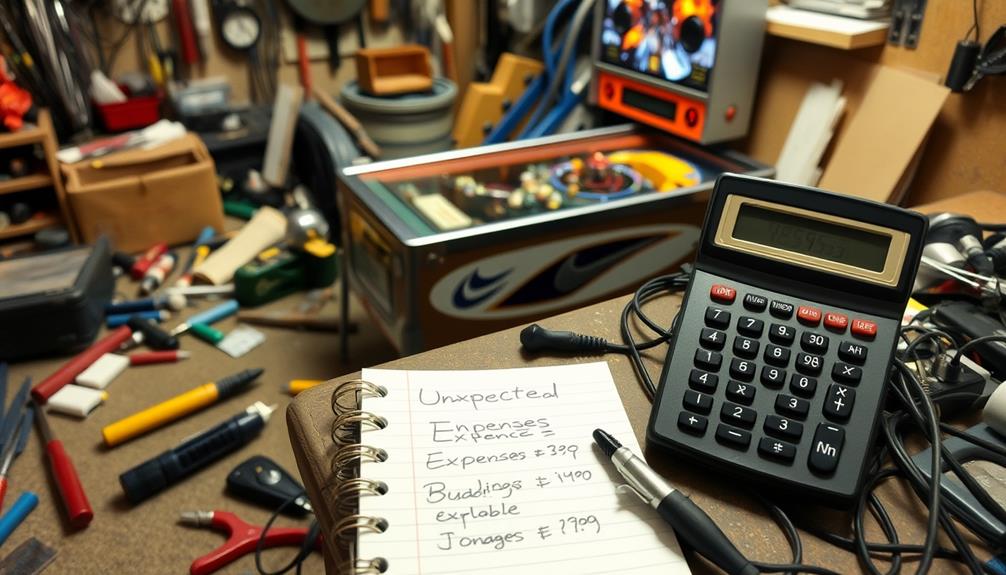
Building a custom pinball machine can quickly become a financial juggling act. When you're budgeting, it's essential to account for unexpected costs that often arise during construction. A well-planned budget should include a miscellaneous fund, typically around 15% of your total budget.
Additionally, exploring best websites to earn money online can provide you with ideas to supplement your budget. Here are some key areas where costs can creep up:
- Material Costs: Initial estimates can be misleading; materials like aluminum might exceed your budget by $12 or more.
- Replacement Parts: You may need to purchase upgraded or replacement parts, pushing your budget from approximately $5,000 to $8,000.
- Specialty Components: Sourcing unique parts or making design tweaks can lead to unforeseen expenses.
- Labor Costs: If your design is complex, consider additional funds for professional assistance beyond the initial parts estimate of around $1,500.
Frequently Asked Questions
How Much to Make a Pinball Machine?
When you're planning to make a pinball machine, consider factors like design complexity and chosen components. Costs can range considerably, so it's essential to budget carefully and explore options like using donor parts for savings.
Why Was Pinball Illegal?
You might wonder why pinball was illegal. It faced bans in the 1940s and 1950s, seen as gambling rather than skill. This perception changed with a pivotal court ruling in 1976, allowing its resurgence.
Why Are Pinball Machines so Expensive Now?
You'll find pinball machines expensive due to rising production costs, advanced technology, and unique designs. Manufacturers invest heavily in development, and niche markets drive prices up, making these games both sought after and costly.
How Much Is a Pinball Machine Worth?
A pinball machine's worth varies based on condition, rarity, and demand. You might find custom builds priced between $5,000 and $10,000, while classic titles can soar up to $17,000 depending on their popularity and age.
Conclusion
Building a pinball machine can be a rewarding yet costly endeavor. Remember, "you get what you pay for," so investing in quality components is essential. Whether you choose to DIY or buy a pre-made machine, budgeting for unexpected costs is a must. With the right planning and a dash of creativity, you can create something truly unique. So, roll up your sleeves, embrace the challenge, and get ready to design your very own pinball paradise!

